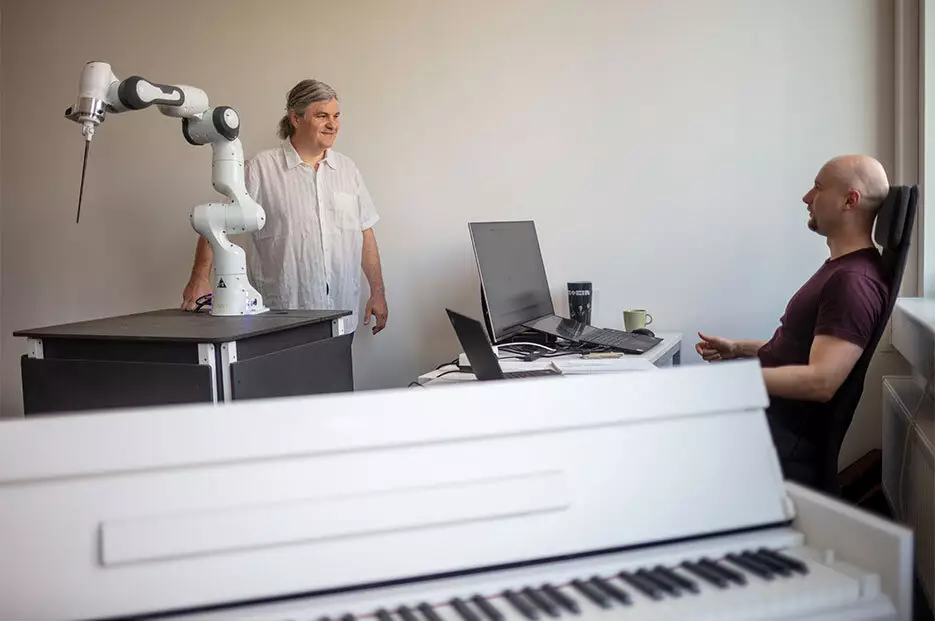In an astonishing display of technological advancement, a three-armed robot was introduced as a conductor in Dresden, Germany, showcasing a blend of art and engineering that marks a new chapter in the realm of orchestral music. Designed to emulate the movements of human conductors, this innovative robot wielded batons that resembled iconic light sabers from the revered “Star Wars” universe. The robot made its debut last weekend by directing the renowned Dresdner Sinfoniker orchestra in a series of performances, igniting conversations about the future of art and the role of technology in creative expression.
What makes this event particularly fascinating is the collaboration between the artistic community and technical experts at Dresden’s Technical University. Programmers and robotics engineers joined forces with musicians to develop a machine capable of interpreting complex musical scores, a task traditionally exclusive to human conductors. The robot was meticulously trained for two years, mastering the nuances of timing and dynamics crucial to effective conducting. Its ability to move its three arms independently allows it to guide different sections of the orchestra simultaneously, an advantage human conductors cannot offer, illustrating the potential for robotics to enhance and innovate artistic endeavors.
The highlight of the inaugural performances included the world premiere of “Semiconductor’s Masterpiece,” a composition specifically commissioned for this mechanical maestro by Andreas Gundlach. Notably, the orchestral arrangement required a conductor who could manage distinct musical lines concurrently, making the robotic conductor’s three-armed design particularly advantageous. According to Gundlach, the inspiration came from the concept of “cobots,” or collaborative robots, which are designed to enhance human endeavors rather than replace them. This philosophy emphasizes a future where robots and humans coexist and complement each other’s strengths.
While the technical prowess of the robot is undoubtedly impressive, Gundlach’s remarks point to an important reflection on human creativity. He expressed that the journey of programming the robot highlighted the intricate beauty of human expression and artistry. Teaching the robot to execute graceful and aesthetic arm movements was not merely a technical challenge but an exploration of the subtleties that characterize human conductors. The significant investment in time and effort to imbue the machine with such qualities demonstrates the complexity behind performing arts and raises questions about the essence of creativity—can a robot convey emotion in the same way a human could?
As this bold experiment unfolds, it is essential to consider the implications for the music world. The potential for robotic conductors to aid orchestras in rehearsals or even in live performances raises both excitement and trepidation. Can a machine truly replicate the passion and spontaneity that a human conductor brings to the stage? The discussions ignited by this performance hint at a future where art and technology not only blend but thrive together, presenting new avenues for artists and audiences alike to explore the intersection of performance and innovation. Ultimately, as we embrace such technological advancements, we may find ourselves rethinking art’s timeless relationship with human expression.


Leave a Reply